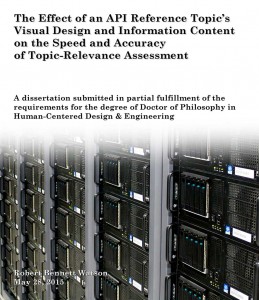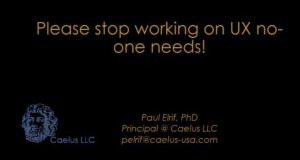I went to the UX Careers 2015 panel last night to hear about the future of User Experience from a panel of UX veterans. There were about 200 people in attendance to hear about the future of the career. The panel had a mix of in-house and agency UX perspectives, which provided interesting answers to the questions presented by the host.
About half the discussion was about job hunting–what to do/not do in an interview. How to stand out from the [ever growing] crowd. How it’s a “job-seeker’s” market, yet the need for UX researchers is likely to start diminishing. While the answers seemed to be all over the map, more than one panelist remarked that there are many different contexts in which UX research & design are applied and that one-size is not likely to fit all.
The career guidance could best be summarized as: be yourself, know yourself, present yourself with confidence, and find the best fit for you.
The other half of the discussion was about UX trends–the most interesting question to me being, “What’s the next big thing in UX?” (or something to that effect). First off, there is no “next big thing,” just an ongoing evolution of little things and the same old thing (e.g. research and design methods) applied to different stuff. One point that was made, which resonated with my post about the Internet of things, was how the focus should be on the human experience (human-human interaction) more than the human-machine interaction/experience. The notion of invisible experiences and transparent processes was also mentioned.
It was exciting to hear that the future of the best user interface is no user interface. Now that’s a user interface I’ll be able to sketch even with my horrid drawing skills. Of course the user experience of that invisible user interface will still take some [considerable amount of research and] work to design, but at least the UI will finally be easy to sketch.
If anything, the session confirmed that we live in interesting times.




